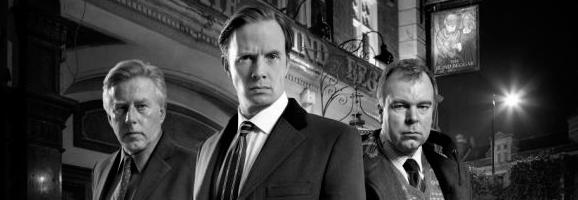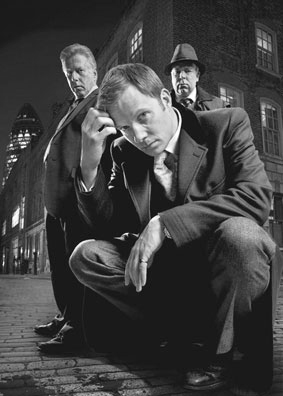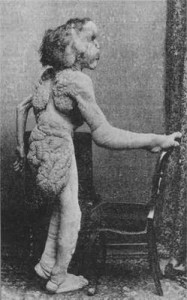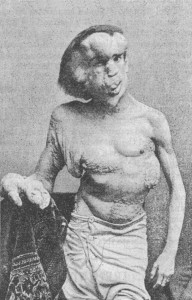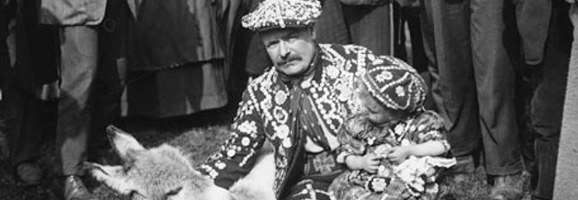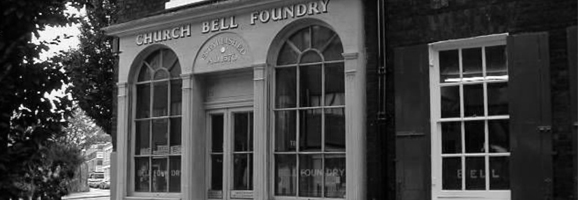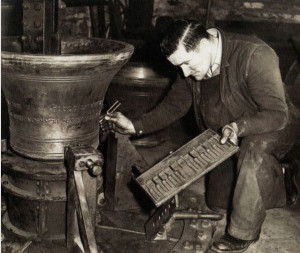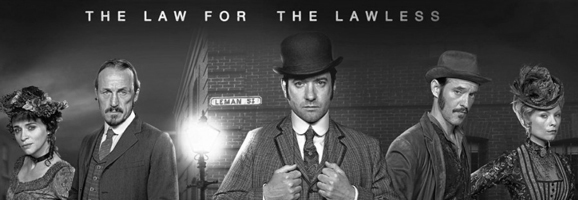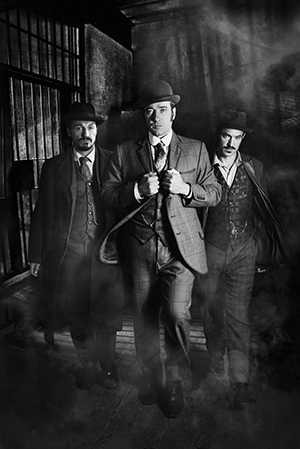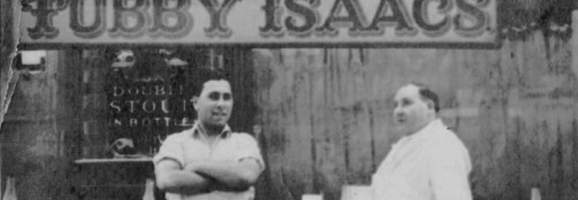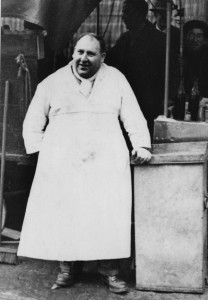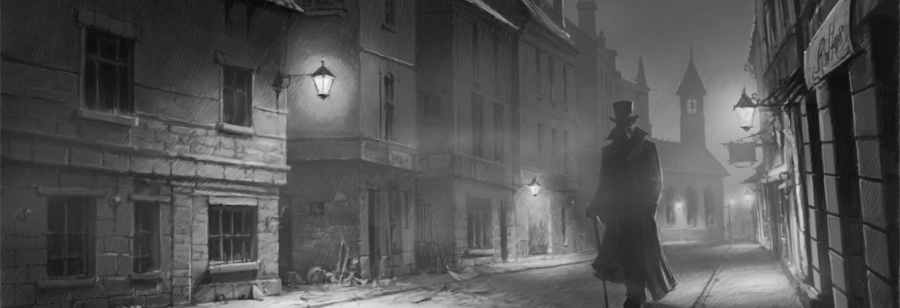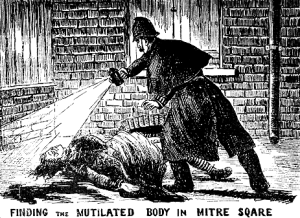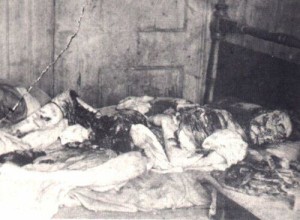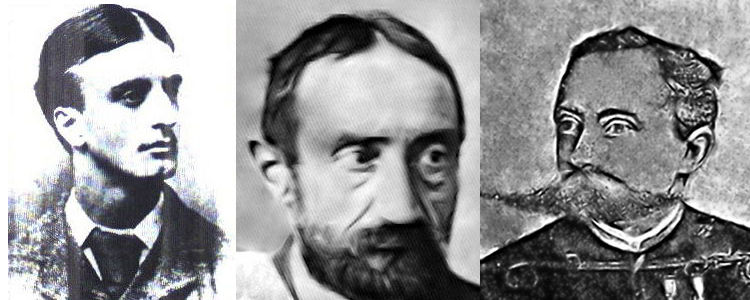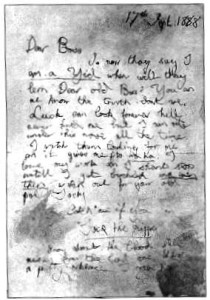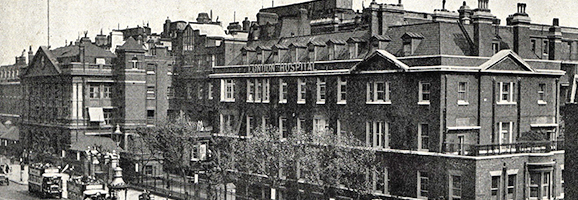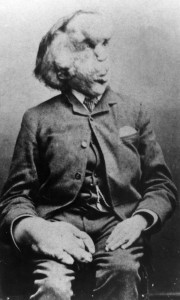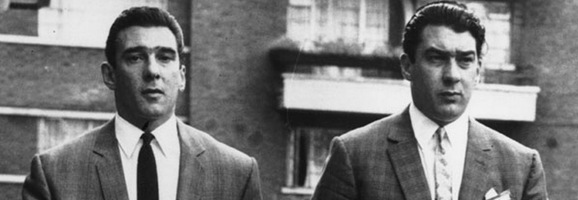
So much has been written about the notoriety of the Kray Twins that it is difficult to separate fact from fiction, but the salient points of the lifestyle and rise to fame of the East End ‘Firm’ are detailed below.
Ronnie Kray, together with his twin brother Reggie grew up in the East End during wartime. The twins had a Romany/Jewish background and their father, Charles, spent most of the time during war years avoiding armed service by keeping on the move. As a result, the twins were raised by their mother, Violet. Violet was so fiercely protective of her ‘wonderful boys’ that she turned the family home in Vallance Road into a safe haven – a place that came to be known as ‘Fort Vallance’.
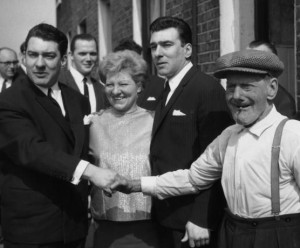
The twins’ grandfathers Cannonball Lee and Jimmy Kray came from a boxing background and were to prove hugely influential upon the twin boys. Ronnie and Reggie, together with their elder brother Charles became accomplished boxers, and as a result of unlicensed bouts against local rivals, the twins’ street reputations became enhanced.
From the very beginning it became apparent that the twins strength was their fierce allegiance to each other – if you picked a fight with Reggie, then you were picking a fight with Ronnie and vice versa. However, it became apparent from an early age that Ron was somewhat slower and less flamboyant than his brother. Ronnie soon began to develop his own fantasy world that centred on a desire for unquestioning leadership.
Their national service was spent mainly in the Military Prison for assaulting NCOs or going AWOL, and they eventually emerged from Shepton Mallet military prison well prepared for a lifetime of challenging any form of authority.
As a result of the many disputes over what they saw as their ‘territory’, the twins decided to stake a claim in a local business. By the time the twins had reached the age of 20, they had taken over a local billiard hall, The Regal, on the Mile End Road and entered a hazy area between security and extortion.
While he was at the billiard hall, Ronnie began to play out the most dominant of his many fantasies, that of being a gangster. It was in 1954 that Ronnie cutlassed members of a Maltese gang that tried to extract protection money from them, and their reputation for violence was established. The twins began to gather a collection of villains around them, with Ronnie dreaming of creating his own empire, a powerful criminal “Firm”, with him and Reggie at the head. Ronnie soon became known to his followers as “the Colonel”.
The Krays soon linked up with Billy Hill, who introduced them to gambling just in time for the legalisation of the industry in 1961. Ronnie and Reggie moved up West – and most of Ron’s fantasies of creating his own crime empire started to come true.
The increasing levels of violence associated with the Krays dealings continued. Whether it was to impose their control over clubland or dealing with recurring feuds between rival gangs, the twins had reputations to protect.
As The Krays bought their way into clubs and gambling establishments in the West and East Ends of London, they started to gain some legitimacy by befriending sportsmen and showbiz personalities, and started to become linked with the 1960’s socialite scene.
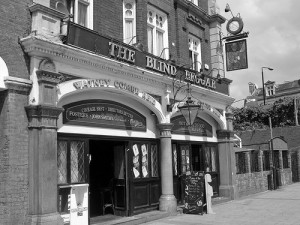
The Kray twins had many criminal contacts all over Britain and had worked hard to buy their protection from contacts in many police stations, presenting an outward appearance of being smart, well-connected – and untouchable. However, it soon became apparent that Ronnie was only able to thrive on conflict, and things were coming to a head. In 1966, Ronnie marched into the Blind Beggar pub saloon bar and shot dead George Cornell, an old enemy in full view of the occupants. Despite every detail of the killing being seen, the twins influence and control over the local population meant that no one would come forward to act as a witness and identify the murderer to the police.
As the Sixties progressed, Ronnie and Reggie became even more convinced of their immunity from any authority. Together, they arranged the escape of Frank “Mad Axeman” Mitchell from Dartmoor Prison (and were later acquitted of his murder). They even contemplated forming an alliance with the Mafia, and looked abroad to expand. But Ronnie’s mental condition was deteriorating and the responsibility for running the firm fell to Reggie, who remained completely devoted to his brother.
However after his wife, Frances Shea, committed suicide, Reggie went to pieces, and with Ronnie’s encouragement he murdered a troublesome fringe member of the firm. The killing of Jack (“the Hat”) McVitie was to be a turning-point. According to one of their former henchmen, Albert Donoghue, Ronnie egged his brother on to kill Jack “The Hat” McVitie, a small time crook and irritant to the brothers. “I’ve done mine,” Ronnie supposedly told Reggie. “About time you done yours.”
McVitie had been lured to a party in Hackney, where he was accused of damaging the Kray name, and stabbed to death by Reggie. Members of the Firm were left to clean up the mess while the body was disposed of.
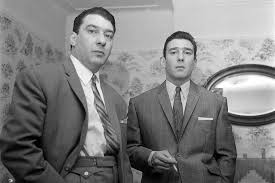
The twins could no longer be ignored, and under pressure The Firm began to crumble. Following a police investigation which took the Krays off the streets (as the result of evidence provided by an informer working for the United States Treasury) witnesses to the killings of both Cornell and McVitie were found.
Many of their own gang of thieves and hard men gave evidence against the twins when they finally appeared at the Old Bailey at what was seen as a show trial in 1969. The sentencing judge, Mr Justice Melford Stevenson passed sentence that they should be jailed for life, with a recommendation that they serve at least 30 years.
Ronnie, was eventually certified a paranoid schizophrenic in 1979 and served out his sentence heavily medicated in Broadmoor.
